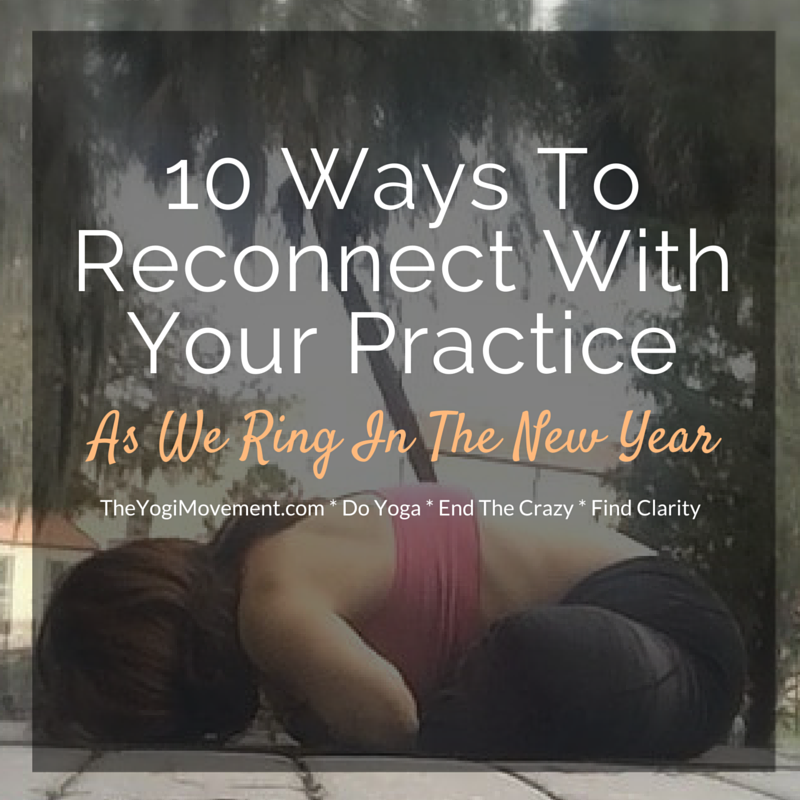As we ring in the new year, I wanted to reconnect with you on why we practice. With all of the craziness going on in this world, in your mind, and in your life – the true meaning of why can get lost.
As free and open as yoga is, every yogi has an opinion that can easily cloud yours. It’s such a personal experience, and sometimes people forget that their practice and their beliefs are not the truth for everyone else. We all have our own personal truths, and there is more than just one way to practice.
It’s so important to connect with your why. If it’s not strong enough, then you might get bored, give up, or lose sight of your intentions, and fall into a rut that seems impossible to get out of.
I have gotten way off my path, and there have been times where the rollercoaster of emotions have turned upside down, and I felt completely stuck.
I see so many posts about how ‘yoga is not about the posture.‘
Of course it’s not.
There are a million ways to practice, but we’ve chosen asana as our primary sadhana.
It sure is a big part of our practice, and it’s a beautiful expression, so I want to really appreciate and focus on the beauty and meaning of it right here & now.
So, here we go…. 10 things to reconnect with about your yoga practice:
- Our practice is an expression of our human experience. We learn on the mat where we need to let go. Are you pushing yourself too hard, getting frustrated in postures, or comparing yourself to others? These are all indicators of how you’re living your life. Once you can surrender these areas of on and off the mat, you’ll get closer and closer to becoming unstuck, and living your purpose.
- Getting on the mat and practicing for 5 minutes is better than that 60 or 90 minute practice that you say you’re going to do, but don’t ever do.
- Always work on a posture that you are a little scared of, dread, or that seems impossible. Some examples are arm balances, headstands, or getting a leg behind the head. This will help you create patience, persistence, and dedication. Over time, you’ll get over your fears, and get closer and closer to what you thought was impossible.
- It’s not just stretching and doing fun things with the body, but releasing all of the built up tension. Our experiences and the emotions that go with them are bottled up in our bodies. The physical practice helps to release those.
- It’s okay to cry. As we release those emotions and blockages, we might relive feelings of anger, sadness, and resentment. What hurts going in, also hurts coming out. Don’t label or judge it. Just be with it.
- Don’t label your practice. Try not to say that you had a good or bad practice, but know that all practice is good. Whether you could bind, touch your toes, or barely bend – you did exactly what you needed to do.
- It’s okay to experiment. In Ashtanga especially we get caught up in all of the rules. “You must practice Ashtanga this way. Don’t add or skip a posture. Bad yogi!” Let’s say you’re having a day where you feel tight in the hips, and you want to stop and do pigeon or a split just to breathe into it and open up? Just go ahead and do it! What’s your intention? It’s not to disrespect Ashtanga – it’s to connect and feel! It’s okayyyyyy. You’re still an Ashtangi! (Just don’t do it in led class or a mysore shala!)
- Progression in yoga isn’t advanced postures. Progression in yoga is learning to be okay with where you are in your practice. Progression is learning to pull back and do a lighter practice when you need to. Progression is knowing that your practice is different every day, and going into it without expectation or attachment.
- Focus on the foundations. When you get into each posture, reconnect with the breath, bandhas, and drishti until you don’t have to think about it anymore. This creates the moving meditation, which will help you grow on and off the mat.
- Enjoy your practice. Even the parts that feel tough because it should be an exploration. If you come to an area of pain, or something doesn’t feel right, then modify to make it work. If you are having a hard time breathing in a posture, then how can you find your breath? What postures feel stiff where you can focus on more stillness and surrender?
Brene Brown says that “The people who have the highest capacity for discomfort rise the strongest and the fastest,” so try to think of that next time you’re going through a down period. Be excited about the learning and growth.
But, most important, remember to enjoy your practice even when it feels impossible.
Have a happy, healthy, and heart opening new year!


Leave a Reply